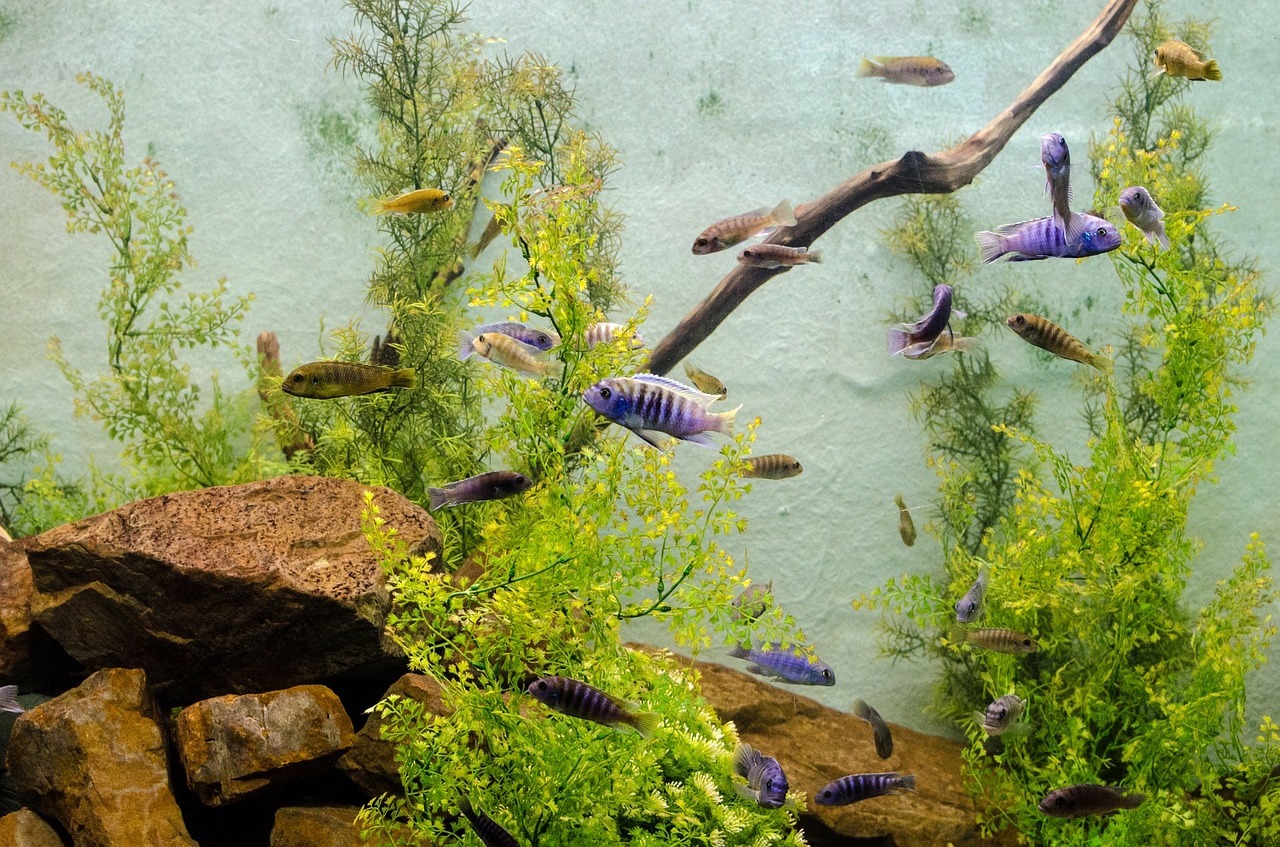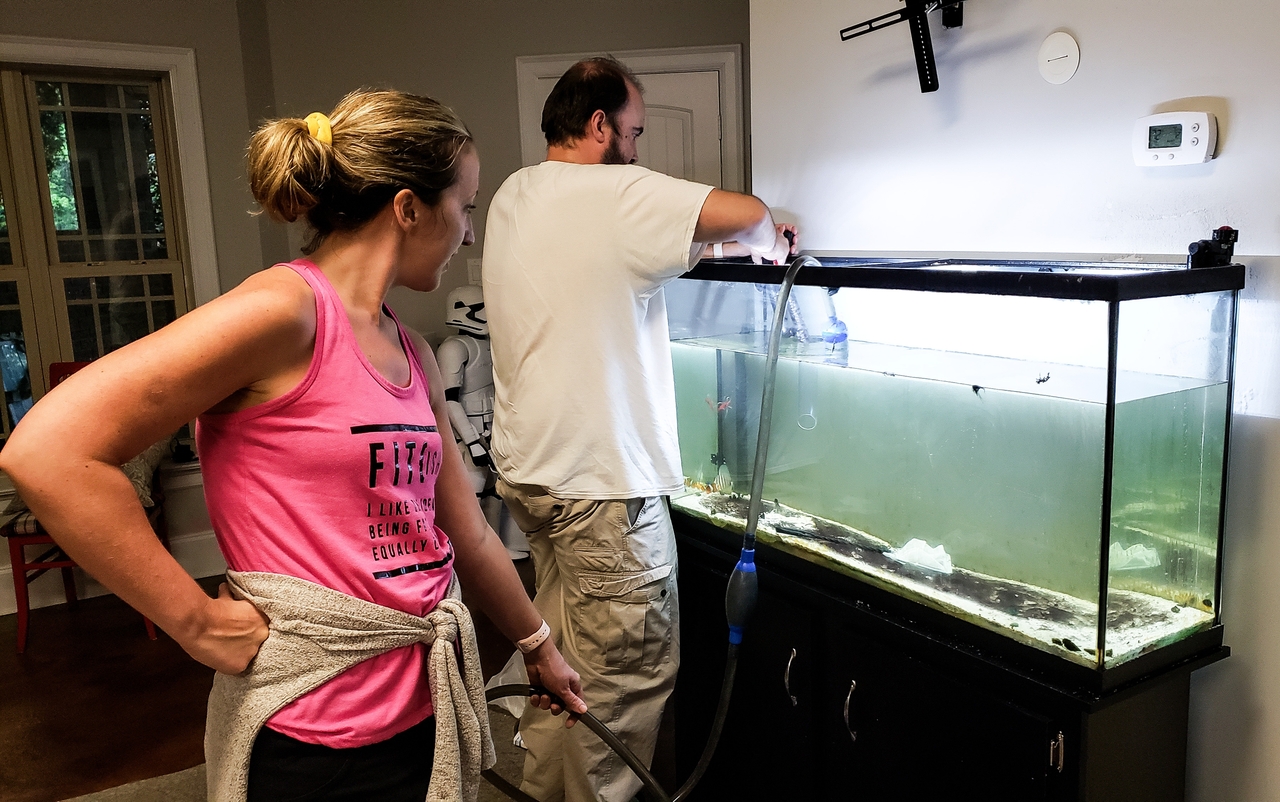How To Fix Cloudy Aquarium Water

How to fix cloudy aquarium water?
- Let the bacterial bloom phase finish
- Do not put too much livestock
- Lessen the amount of light
- Cut down on the nutrients
- Maintain your aquarium
- Try seeding
- Clean the driftwood
Regardless of whether you are an expert at aquascaping or interested in such a hobby, you will likely end up asking how to fix cloudy aquarium water. The water can end up appearing gray, milky white, yellowish, or even green. Unfortunately, there is no single answer to why aquarium water starts to appear cloudy. In order to treat the problem, you must determine the root cause to make an informed decision regarding treatment and prevention. Continue reading on to learn more about this.
Let The Bacterial Bloom Phase Finish

Do you have a brand new aquarium that has thick, white cloudy water after only a few days? A newly set up aquarium goes through a biological break-in known as bacterial bloom.
Despite being invisible to the naked eye, millions of microbes are swirling around the tank causing foggy discoloration. During this phase, there are also nitrifying bacterias that are beneficial for the tank. These filter the water by eliminating organic wastes and creating stability. All of these factors may cause cloudiness.
The treatment for this is to do nothing. Remember that it may take several weeks and months to establish the nitrifying bacterial colonies that clear waste from the cloudy water. Meanwhile, you can help the beneficial colonies by cleaning out livestock waste, plant debris, and uneaten food.
Do Not Put Too Much Livestock
Overstocking your tank with livestock is asking for trouble in a variety of ways. For one, too many livestock can cause behavior clashes, stress, and the outbreak of diseases for them.
More livestock means more waste will be produced as well. This won’t only overload the filter system, but also results in more food for the microbes that cause bacterial bloom and cloudy aquarium water. You can resolve this problem by relocating some of your livestock to another tank, not buying too much livestock in the first place, or carrying out a partial water change.
Lessen The Amount of Light

Does the aquarium tank have green mold-like water? Then, it is likely due to the accumulation of algae. These plant-like organisms can grow on decorations and the sides of your tank.
If your tank is positioned in direct sunlight, move it to a location where the rays hit at the minimum. Reduce the amount of time the lights are on as well. Once the algae are starved of light, they will be eliminated. Then, your filter will remove the green algae from the water.
You can also try to purchase algae-eating livestock such as Otocinclus, Amano Shrimp, or Nerite Snails.
Cut Down On The Nutrients
Nutrients such as phosphates and nitrates can also help algae accumulate in aquarium tanks.
Phosphates come from two things: decaying matter or the water itself. To reduce the number of phosphates in the water, give your tank a thorough cleaning. Trim away decaying plant matter, vacuum the substrate, and get rid of livestock waste or uneaten food. Afterward, test your aquarium water for phosphate. If the result is high, you’ll need to switch to using reverse osmosis water for the tank or change and clean the water regularly.
On the other hand, nitrates naturally exist in tanks due to livestock waste. The only treatment for this would be to perform a partial water change.
Maintain Your Aquarium

Maintaining the aquarium is one of the best ways to avoid cloudy aquarium water. Think about it. Did you just add a new substrate to the tank and a cloud of dust appeared in the water column? Substrates contain fine specks that separate when added to water. When was the last time you cleaned the livestock waste, carried out a partial water change, or rinsed out the filter? It may be high time to maintain the tank.
Try Seeding
If you have a new setup, you can prevent bacterial bloom and cloudy water by seeding your aquarium. Seeding means transferring some plants, substrate, or decoration from a mature tank to a new one. The nitrifying bacteria from the other tank will speed up the bacterial bloom phase. This procedure can cut the usual cycle time by half.
Clean The Driftwood

Many aquascapists use driftwood for decoration purposes. In addition, some plants can grow on wood such as the Anubia Nana, and some livestock use wood as hiding places. However, driftwood can release a brown dye called tannin. This can slowly turn the aquarium water into a yellowish-brown color.
The common treatment for tannin is to boil the driftwood before placing it in the tank. If you already soaked the driftwood in water, the best thing to do is add activated carbon to your filter system. This can help get rid of tannins that stain the water.
Key Takeaway
If you’re wondering how to fix cloudy aquarium water, we have stated seven potential solutions above for you. It can be alarming to see cloudy water in your aquarium. It’s important to remember that the solution will depend on the root cause of the cloudiness.
At Aquascape Philippines, we offer a myriad of aquascaping items such as soils, substrates, filters, livestock, fish food, lights, tanks, and hardscaping materials. Some of which may prove to be beneficial for clearing cloudy water.
Click here to browse the whole product collection. You could also get in touch with us by clicking here! We are ready to cater to your needs from Monday to Friday, from 9 am to 6 pm.
Share on

